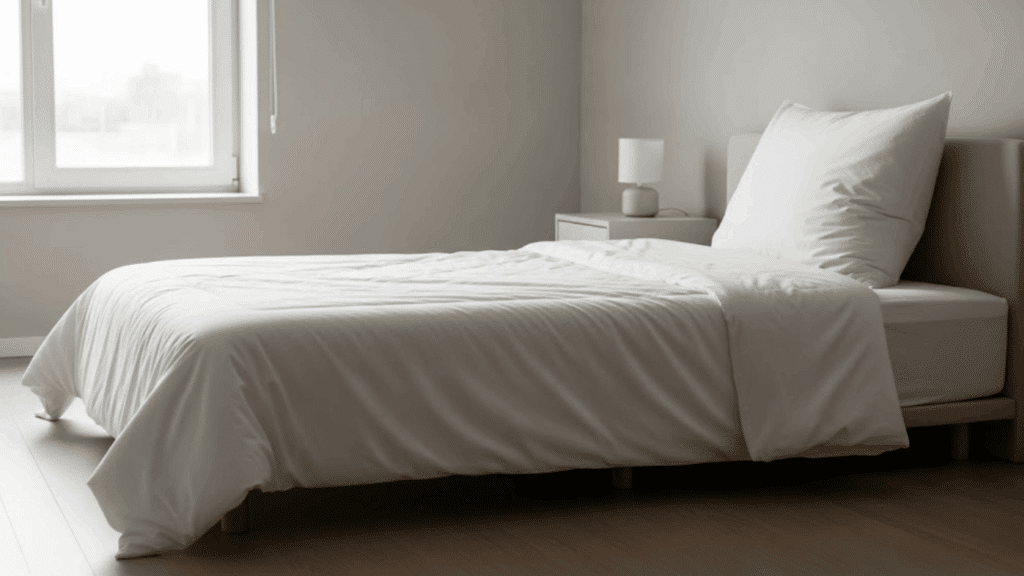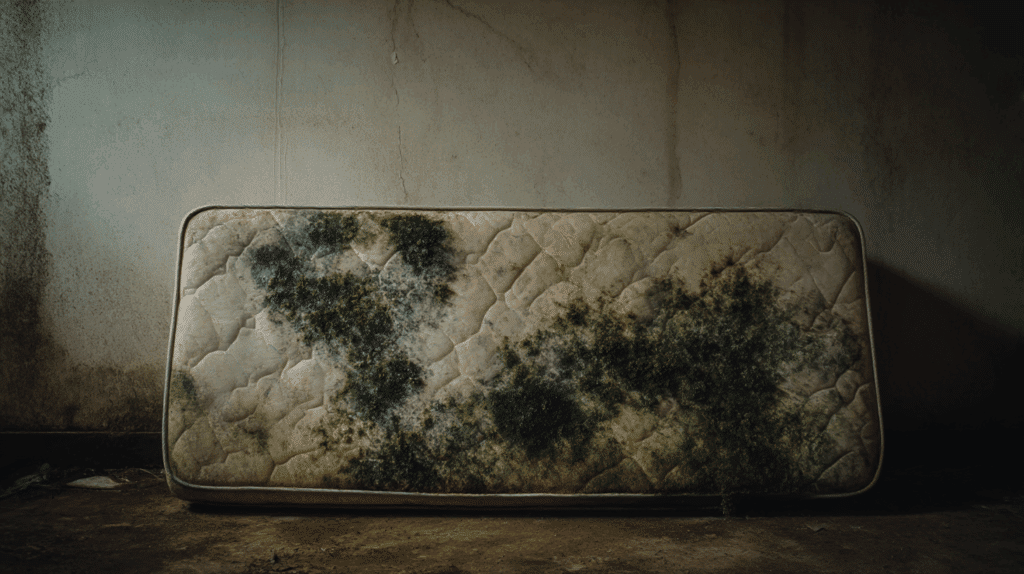Here’s a little secret most of us don’t want to think about: your pillow might be older than your phone.
And unlike your phone, it’s been collecting sweat, skin cells, dust mites, and maybe even mold for years. Sounds cozy? Not so much.
That’s why knowing how often you should replace pillows is so important. A good pillow keeps your neck supported, your sleep comfortable, and your allergies at bay.
But once it loses its shape or collects too much gunk, it can actually hurt your sleep and your health.
In this guide, we’ll talk about the best time to switch your pillows, the signs they need to go, and some easy tips to make them last longer. Let’s get into it, your neck will be grateful.
Why Replacing Your Pillow Matters
Your pillow is more than just a soft place to rest your head; it’s crucial for keeping your neck and spine aligned while you sleep.
Over time, the filling naturally breaks down, reducing support for your head and putting extra strain on your body. But it’s not just comfort you should worry about.
Pillows can also become a home for dust mites, bacteria, and allergens, which may trigger morning congestion, sneezing, skin breakouts, and even worsen asthma or allergies.
If you often wake up feeling stuffy, sore, or uncomfortable, the problem might not be your mattress; it could be your pillow.
How Often Should You Change Your Pillows?

Most sleep experts agree: the magic number is every 1–2 years. That’s the sweet spot for keeping your pillow fresh, supportive, and free from hidden nasties like dust mites and bacteria.
But here’s the thing, how often isn’t the same for everyone. A few factors can make your pillow wear out faster or last a bit longer:
- Pillow material: Memory foam and latex can outlast polyester or down alternatives.
- Sweat levels: If you tend to sweat at night, your pillow will break down more quickly.
- Climate: Humid environments encourage mold and dust mites, speeding up wear.
- Care habits: Using a pillow protector and washing it regularly can add months to its lifespan.
The better you care for your pillow, the longer it will serve you well, but even the best pillow has an expiration date.
Pillow Lifespan by Type
Different materials break down at different speeds. Here’s a quick chart to help you know what to expect:
| Pillow Type | Typical Lifespan | Notes |
|---|---|---|
| Polyester / Down-Alternative | 1–2 years | Affordable but flattens quickly. |
| Down / Feather | 1–3 years | Needs frequent fluffing to stay puffy. |
| Memory Foam | 2–3 years | Holds shape well, not machine-washable. |
| Latex | 3–5 years | Naturally resistant to dust mites and mold. |
If your pillow is past its expiration date, it’s time to say goodbye, even if it still looks fine.
Signs You Need a New Pillow Now
A worn-out pillow can hurt your sleep and health. Watch for these simple signs to know when it’s time for a replacement.
Common Warning SignsHere’s what to check before you decide to keep or toss your pillow:
|
Eco-Friendly Ways to Get Rid of Old Pillows

Throwing an old pillow straight into the trash isn’t your only choice. If it’s still clean and supportive, you can donate it to local animal shelters that often need bedding.
You can also recycle it by taking it to a textile recycling center in your area. Another option is to upcycle your pillow, turn it into a pet bed, a floor cushion, or even padding for packages.
As a bonus tip, when you buy your next pillow, choose one with a washable cover and long-lasting materials to reduce waste in the future.
How to Extend Your Pillow’s Lifespan
While you can’t make a pillow last forever, you can give it a longer, healthier life:
- Use pillow protectors under your pillowcases to block sweat and oils.
- Wash your pillow every 3–6 months (follow the care label).
- Fluff daily to keep the filling evenly spread.
- Sun-dry every few months to kill bacteria and freshen up.
- Avoid eating in bed crumbs can invite pests.
Even with great care, remember: knowing how often to replace pillows is the real key to good sleep.
Best Recommended Pillows
Finding the right pillow can make a huge difference in your sleep quality. Here are four top-rated options that combine comfort, support, and durability.
- Coop Sleep Goods Original Adjustable Pillow: Adjustable shredded memory foam for personalized loft and support. Great for all sleep positions.
- Eli & Elm Side Sleeper Pillow: Ergonomic U-shape design for optimal neck alignment, ideal for side sleepers.
- TEMPUR-Cloud Pillow: Soft yet supportive TEMPUR material that adapts to your head, neck, and shoulders.
- Beckham Hotel Collection Down-Alternative Pillow (Set of 2): Plush down-alternative with a luxury hotel feel. OEKO-TEX certified and budget-friendly.
These pillows are consistently rated among the best for comfort, support, and durability.
If you want an adjustable loft, ergonomic design, premium memory foam, or budget-friendly luxury, each one delivers excellent sleep quality.
Pillow Replacement Myths You Should Forget
Let’s clear up a few common pillow myths that might be stopping you from getting a better night’s sleep
1. “If I wash it, it will last forever.”
Washing keeps your pillow clean, but it doesn’t restore lost support or fix worn-out filling. A clean pillow can still be a bad pillow.
2. “Expensive pillows last for life.”
High-quality materials do last longer, but no pillow is immune to wear and tear. Every pillow has an expiration date, regardless of its price.
3. “Memory foam and latex never need replacing.”
These materials hold up better than most, but they still lose shape and support over time. Even the best pillow needs replacing eventually.
Quick Pillow Care Checklist
Here’s an easy-to-remember schedule for keeping your pillow fresh:
- Wash pillowcase: Weekly
- Wash pillow protector: Monthly
- Wash pillow: Every 3–6 months
- Replace pillow: Every 1–2 years (depending on type)
- Check support: Every 6 months with the fold test
Tip: Consistent pillow care means better sleep, fewer allergies, and a longer-lasting, more supportive pillow
Better Pillows Mean Better Sleep
Your pillow should feel like a soft, supportive cloud, not a flat, lumpy sponge filled with dust mites. Yet many people wait years too long before replacing theirs, sacrificing both comfort and health.
The simple answer to how often you should replace pillows is every 1–2 years for most types.
The exact timing for how often to replace pillows depends on the material, your care habits, and your sleeping environment.
A fresh pillow can improve your sleep quality, reduce allergies, and ease neck and back strain.
Don’t wait until you’re waking up sore; set a reminder today to upgrade your pillow and enjoy cleaner, healthier, and more restful nights. Your neck (and your sleep) will thank you.
Frequently Asked Questions
How Often Should You Replace Pillows?
Most experts recommend replacing pillows every 1–2 years. This helps maintain proper support, improve hygiene, and prevent dust mites and allergens from building up.
How Do I Know If My Pillow Needs Replacing?
Check for lumps, flatness, bad odors, or neck pain. If it fails the fold test, it’s time for a new one.
Does Pillow Material Affect How Often Pillows Are Used?
Yes. Memory foam and latex can last 2–5 years, while polyester and down alternatives usually last 1–3 years with proper care.
Can Washing My Pillow Make It Last Longer?
Washing helps keep it clean and fresh, but it won’t restore lost support or fix worn filling.





